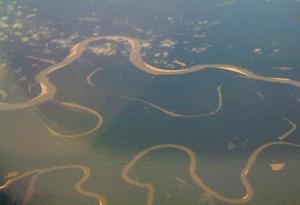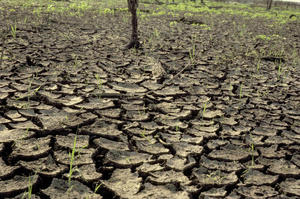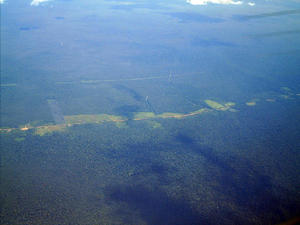Project beneficiaries
Institut de recherche pour le développement
France
Fundação Universidade de Brasília
Brazil
Stichting Koninklijk Nederlands Instituut Voor Zeeonderzoek
The Netherlands
Jacobs University Bremen Ggmbh
Germany
Imperial College London
United Kingdom
Helmholtz-Zentrum Potsdam, Deutsches GeoForschungsZentrum
Germany
Universiteit van Amsterdam
The Netherlands
Università degli Studi di Napoli Federico II
Italy
Global importance of the Amazon River Basin
The Amazon River basin (ca. 6 million km2) is the largest in the world with mean discharge measured in the Amazon River at the outlet of ca. 206 000 m3 s-1 (Callède et al., 2010) and sediment yields estimated to 800-1200 Mt.yr-1 (Meade et al., 1985; Martinez et al., 2009). It is home to the largest rainforest in the world. The Amazon River brings nearly on fifth of the freshwaters delivered to the oceans (Callède et a., 2010), 7% of dissolved chemical species and 5% of the riverborne sediments (Degens et al., 1991). It is bounded to the west by the Andes Mountains, which represents only 10% of the area, but plays a key role on climate (precipitation gradient), hydrology and supplies (weathering, erosion) considerable volumes of material (Dunne et al., 1998; Aalto et al., 2006).
In the last few years, the region has gone through severe drought episodes that have caused significant problems to the local population as well as to many ecosystems. Moreover, flood events are also common and affect yearly the routine of many large cities in the region (Marengo et al., 2008; Espinoza et al., 2009; Lewis et al., 2011). Detailing all aspects of this huge river basin is critical to understand its short- and long-term physico-chemical behavior, and the use of isotope tracers allow to trace the origin of chemical elements (Allègre et al., 1996), their recycling in the basin (Dosseto et al., 2006; Wittmann et al., 2011), and also potentially track the impact of deforestation on erosion (Poitrasson et al., 2009).
It must be stressed that the topic of environmental monitoring is pertinent for a long term study over a regional size object such as the Amazon Basin, as it is possible to encompass the local to global complex relationship on climate. Actually, the human uses of these rich ecosystems may have a significant impact on the greenhouse gas production or retention. Moreover, the Amazon Basin has a huge hydro-electric potential, largely unused. Hydroelectric reservoirs can be an important outgassing source of methane, which is one of the major greenhouse effect gas. Consequently, observing technical and operational recommendations, as well as limiting the numbers or the size of the dams, could be very efficient for greenhouse effect mitigation.
CLIM-AMAZON in the XV Brazilian Congress of Geochemistry - Brasilia 2015- 2015 Annual Meeting/ 4th Workshop and Clim-Amazon results presentation in the 6th Ore-Hybam Conference - Cusco 2015
For the CLIM-AMAZON project fencing, the 4th CLIM-AMAZON Workshop and the International Symposium on Climate and Geodynamics of Amazon Basin (2015 CLIM-AMAZON Annual Meeting) will take place in Brasilia on the 21st and 22nd of October 2015, respectively, during the XV Brazilian Geochemistry Congress (19th-22th October 2015).
The CLIM-AMAZON results will be presented also in Cusco during the 6th Ore-Hybam Conference (26th-30th October 2015).
For more information about the XV Brazilian Geochemistry Congress, click here:
http://www.sbgq.org.br/15cbgq/
For more information about the 6th Ore-Hybam conference, click here
6th HYBAM Scientific Meeting - Cusco 2015 (1.29 Mo)




